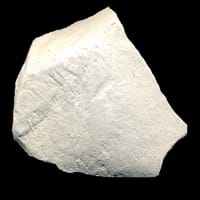Definition
Chalk is a soft, white, powdery limestone consisting mainly of fossil shells of foraminifers
Mugearite is a type of oligoclase bearing basalt, also comprising of olivine, apatite, and opaque oxides
Origin
Unknown
Skye, Scotland
Discoverer
Unknown
Alfred Harker
Etymology
From old English cealc chalk, lime, plaster; pebble, from Greek khalix small pebble, in English transferred to the opaque, white, soft limestone
From mugear + -ite
Class
Sedimentary Rocks
Igneous Rocks
Sub-Class
Durable Rock, Soft Rock
Durable Rock, Medium Hardness Rock
Group
Not Applicable
Volcanic
Other Categories
Fine Grained Rock, Opaque Rock
Opaque Rock
Texture
Clastic or Non-Clastic
Glassy, Massive, Porphyritic, Scoriaceous, Vesicular
Color
Grey, White, Yellow
Black, Brown, Light to Dark Grey
Durability
Durable
Durable
Appearance
Soft
Dull and Soft
Interior Uses
Decorative Aggregates, Homes, Interior Decoration
Floor Tiles, Flooring, Homes, Hotels
Exterior Uses
As Building Stone, As Facing Stone, Paving Stone, Garden Decoration
As Building Stone, Garden Decoration
Other Architectural Uses
Powder
Curbing
Construction Industry
As Dimension Stone, Cement Manufacture, Construction Aggregate, for Road Aggregate, Making natural cement, raw material for manufacture of quicklime and slaked lime, Source of calcium
As Dimension Stone, Cobblestones, Rail Track Ballast, Roadstone
Medical Industry
Not Yet Used
Not Yet Used
Antiquity Uses
Artifacts, Monuments, Sculpture, Small Figurines
Artifacts, Monuments, Sculpture
Commercial Uses
Alumina Refineries, Creating Artwork, Drawing on blackboards, Gymnasts, athletes and mountain climbers use for grip, In aquifers, Paper Industry, Production of Lime, Raw material for manufacture of quicklime, slaked lime, Soil Conditioner, Whiting, Whiting material in toothpaste, paint and paper
Creating Artwork
Types
Not Available
Alkaline Basalt, Boninite, High Alumina Basalt, Mid Ocean Ridge Basalt (MORB), Tholeiitic Basalt, Basaltic trachyandesite, Mugearite and Shoshonite
Features
Clasts are smooth to touch, Is one of the oldest rock, Smooth to touch, Very fine grained rock
Has High structural resistance against erosion and climate, Very fine grained rock
Archaeological Significance
Famous Monuments
Data Not Available
Data Not Available
Famous Sculptures
Data Not Available
Data Not Available
Formation
Chalk is formed from lime mud, which accumulates on the sea floor which is then transformed into rock by geological processes.
Mugearite forms when lava reaches the Earth's surface near an active volcano. The temperature of lava is between 1100 to 1250° C when it gets to the surface.
Mineral Content
Calcite, Clay, Clay Minerals, Quartz, Sand
Olivine, Plagioclase, Pyroxene
Compound Content
Ca, NaCl, CaO
Aluminium Oxide, CaO, Iron(III) Oxide, FeO, Potassium Oxide, MgO, MnO, Sodium Oxide, Phosphorus Pentoxide, Silicon Dioxide, Titanium Dioxide
Types of Metamorphism
Not Applicable
Burial Metamorphism, Impact Metamorphism
Types of Weathering
Biological Weathering, Chemical Weathering
Biological Weathering, Chemical Weathering
Types of Erosion
Chemical Erosion, Coastal Erosion, Water Erosion
Not Applicable
Grain Size
Very fine-grained
Not Applicable
Fracture
Not Available
Conchoidal
Streak
White
White to Grey
Porosity
Highly Porous
Less Porous
Luster
Dull
Not Available
Compressive Strength
Not Available
Cleavage
Non-Existent
Not Applicable
Specific Gravity
2.3-2.4
2.8-3
Transparency
Opaque
Opaque
Density
2.49-2.50 g/cm3
2.9-3.1 g/cm3
Resistance
Heat Resistant
Heat Resistant, Pressure Resistant, Wear Resistant
Deposits in Eastern Continents
Asia
Brunei, India, Indonesia, Malaysia, Singapore, Thailand, Vietnam
India, Russia
Africa
Cameroon, Chad, Ghana, Kenya, Malawi, Sudan, Tanzania, Togo, Zambia, Zimbabwe
South Africa
Europe
England, France, Germany, Spain, United Kingdom
Iceland
Others
Not Yet Found
Not Yet Found
Deposits in Western Continents
North America
Canada, USA
Canada, USA
South America
Colombia
Brazil
Deposits in Oceania Continent
Australia
Adelaide, New Zealand, Queensland, Tonga, Victoria, Yorke Peninsula
Not Yet Found
All about Chalk and Mugearite Properties
Know all about Chalk and Mugearite properties here. All properties of rocks are important as they define the type of rock and its application. Chalk belongs to Sedimentary Rocks while Mugearite belongs to Igneous Rocks.Texture of Chalk is Clastic or Non-Clastic whereas that of Mugearite is Glassy, Massive, Porphyritic, Scoriaceous, Vesicular. Chalk appears Soft and Mugearite appears Dull and Soft. The luster of Chalk is dull while that of Mugearite is not available. Chalk is available in grey, white, yellow colors whereas Mugearite is available in black, brown, light to dark grey colors. The commercial uses of Chalk and Mugearite are alumina refineries, creating artwork, drawing on blackboards, gymnasts, athletes and mountain climbers use for grip, in aquifers, paper industry, production of lime, raw material for manufacture of quicklime, slaked lime, soil conditioner, whiting, whiting material in toothpaste, paint and paper.










